ARYZTED Development
Graffiti is all over Europe. It’s abundant. It’s divisive and it’s reactionary. It’s a sign that younger people in particular are reclaiming space, sharing views, saying, “I’m here!”, being political, or in some cases just being rebellious assholes. Graffiti is not one thing, and to dismiss it or belittle it is to also lose sight of the message, “We need our fucking space back!”
This is particularly poignant because a lot of public advertising goes unchecked, and a few select people benefit from it and are making loads of dosh off it. What stings is that they’re profiting off our public space, off our visual landscape. It’s offensive. Graffiti on the other hand, is in many cases a visceral reaction to advertising, it’s showing that individuals share the space too… Who gets to decide what stays and what goes?
I’m not here to espouse the virtues of graffiti, but I am here to say that how we react to it, how we respond to it, and how we deal with it is important. In December 2023, Jono aka Hide wrote an open letter to our town, Hilton, because someone (we now know it’s a group of young teenagers) was overzealous with a can of black spray paint. His letter was a masterclass in diplomacy.
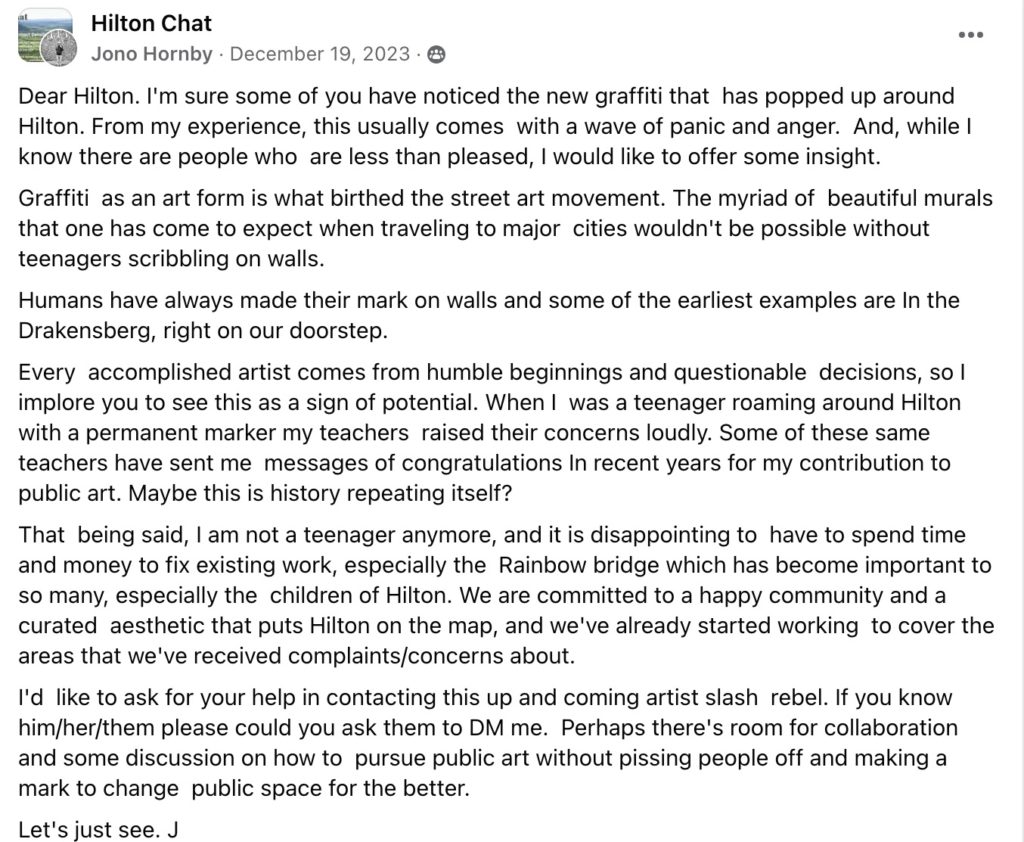
Sort-of similarly, a few years ago, someone tagged the Basilica de Santa Maria del Pi. This was illegal graffiti and the church denounced it… From there controversy erupted, the media got involved, and the church realised it had to reach out to a collective of mural artists. The mural artists and the church then developed a project to equally serve the views of the church, urban art, citizens, and public space. It was a superhuman effort in diplomacy and group work.
The artist Aryz (Octavi Arrizabalaga) was commissioned because he is an artist who knows a whopping amount about religious art history. He was tasked with painting a 14m x 10m canvas to install in the church as a symbol of how modern art can be integrated into old spaces. In an interview, Aryz says, “For me, the dialogue between the piece and its surroundings is fundamental and there is a direct dialogue between the architecture of the church, and the piece.” The idea of street art and mural art is to always reference the space and that’s why it’s unique. Public art is as much about the space as it is about the piece… It’s a dance.
Aryz, like most street artists, understands this dance because he began his journey with graffiti and learned about communicating through art and space. His style developed, and now he is a renowned street artist and canvas artist through his epic (and I mean that in the traditional sense of the word) installations.
The Crianca (Child) project launched as a convergence of the past and the future and showed that there is a place for modern street art and mural art in traditional spaces. The overarching message is that if government institutions, municipalities, and cities were more open to discussions about legal and curated street art, then this would have a positive impact on stamping out or at least lessening illegal graffiti. The way to nurture local talent and allow it to grow, is not done through painting over illegal graffiti and ignoring the problem. It is done through active engagement, and opening up public space and dialogue to allow artists to work with communities to create everyday magic.
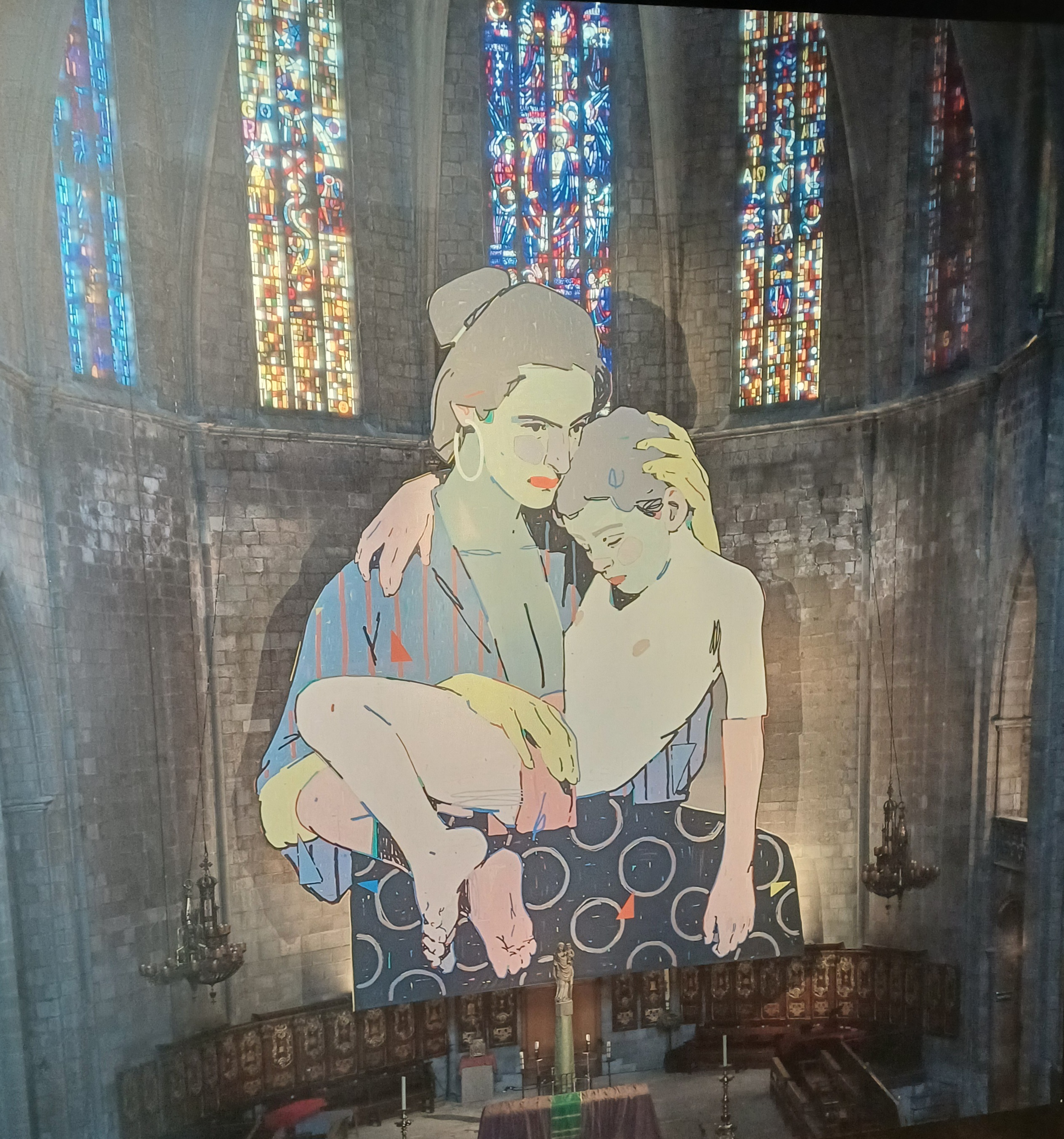
“We live constantly overstimulated at a time when everything is immediate and it is almost revolutionary the fact that you can go to a place to look at a piece quietly. That a coat of paint on canvas can transmit or generate a feeling to a person like it has done for centuries, for me it’s magic. And that it continues to be meaningful in these spaces of reflection and contemplation is also magic. Because reflection and contemplation are fundamental in art. Because if a film, a text, a book, a song, or a painting can make you think… This is the meaning of art, because change can come from reflection.” (Aryz: 2023)
On our spectacular tour of Prague, where the old seems to be suspended in a time capsule, we were fucking delighted to know that Aryz was exhibiting less than 800m from our hostel. I didn’t know what to expect, but Jono was absolutely bibbing with excitement… I think the equivalent would be if I went to a book reading by Ivan Vladislavic. The exhibition titled Vestigio, immediately ignited something in me. Titles are important, and vestiges of the past have always resonated with me, I knew the exhibition was going to be incredibly rad.
But not as rad as it was.
Even if you’re not the type of person who likes to ponder over art and look for, “What is the artist trying to say here?” You’re going to dig what you see when you look at Aryz’s art. At it’s most basic level, Aryz uses a very specific and distinct colour palette and there’s a calmness to it. This calmness is juxtaposed with the fragmented nature of his compositions and the disturbing “seeing inside” element that he creates with some childlike brushwork and some more realistic techniques. This fragmentation is key because Aryz creates a disturbance in his pieces, whether it’s between traditional and postmodern, the past and the future, or nature and unconventional scenery. You look at his art, and you see the world.
For the avid art lover, Aryz’s art is steeped in a vast knowledge of art history. He references many famous works in his pieces– from frescoes, sculpture, canvases, etc. For the viewer, this means that there’s a familiarity when you look at the art, even if you can’t quite put your finger on it. This creates a sensibility that’s both comfortable and jarring, serene and turbulent. The collage-like quality also provides energy and movement and there’s a humorous nod to the past that he employs. In old paintings, masters would often “correct” mistakes by painting over them. So, if a limb of an animal wasn’t quite correct, it would be painted over and the artist would try again. Often these mistakes could still be subtly recognised in the finished piece. Aryz uses this technique to play on the past, but he also reclaims these “mistakes” as a way to create movement and vitality. In the world of Aryz, it’s literally the more limbs, the merrier.

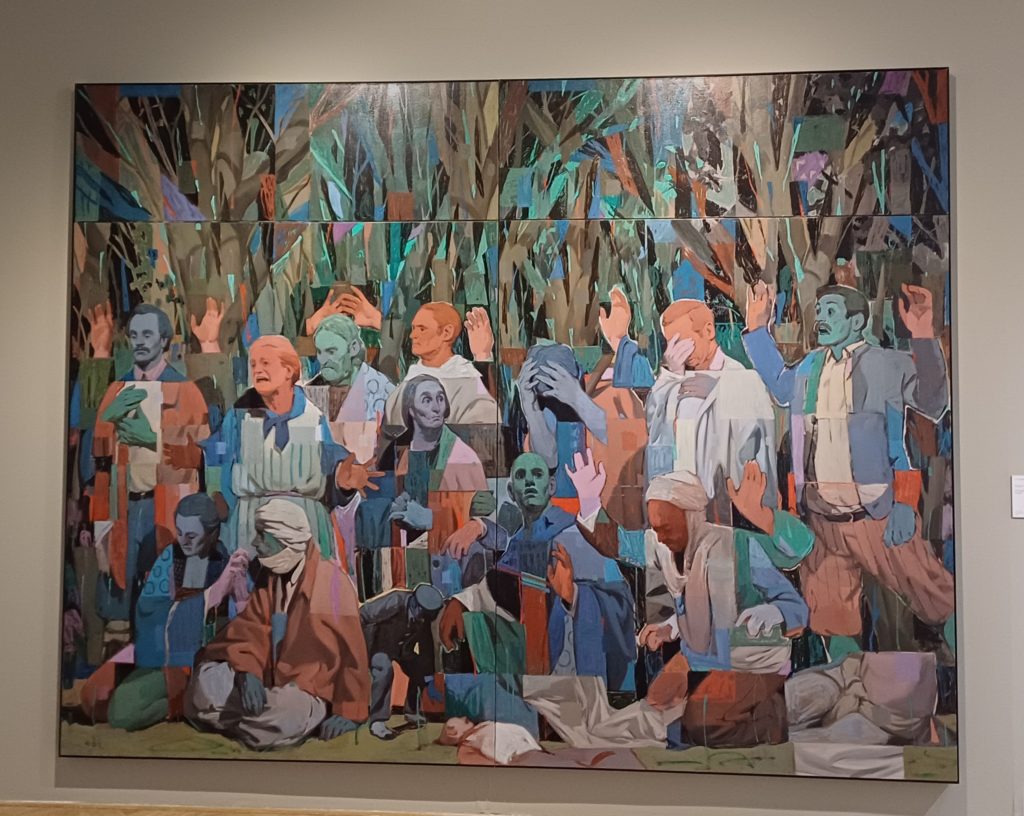
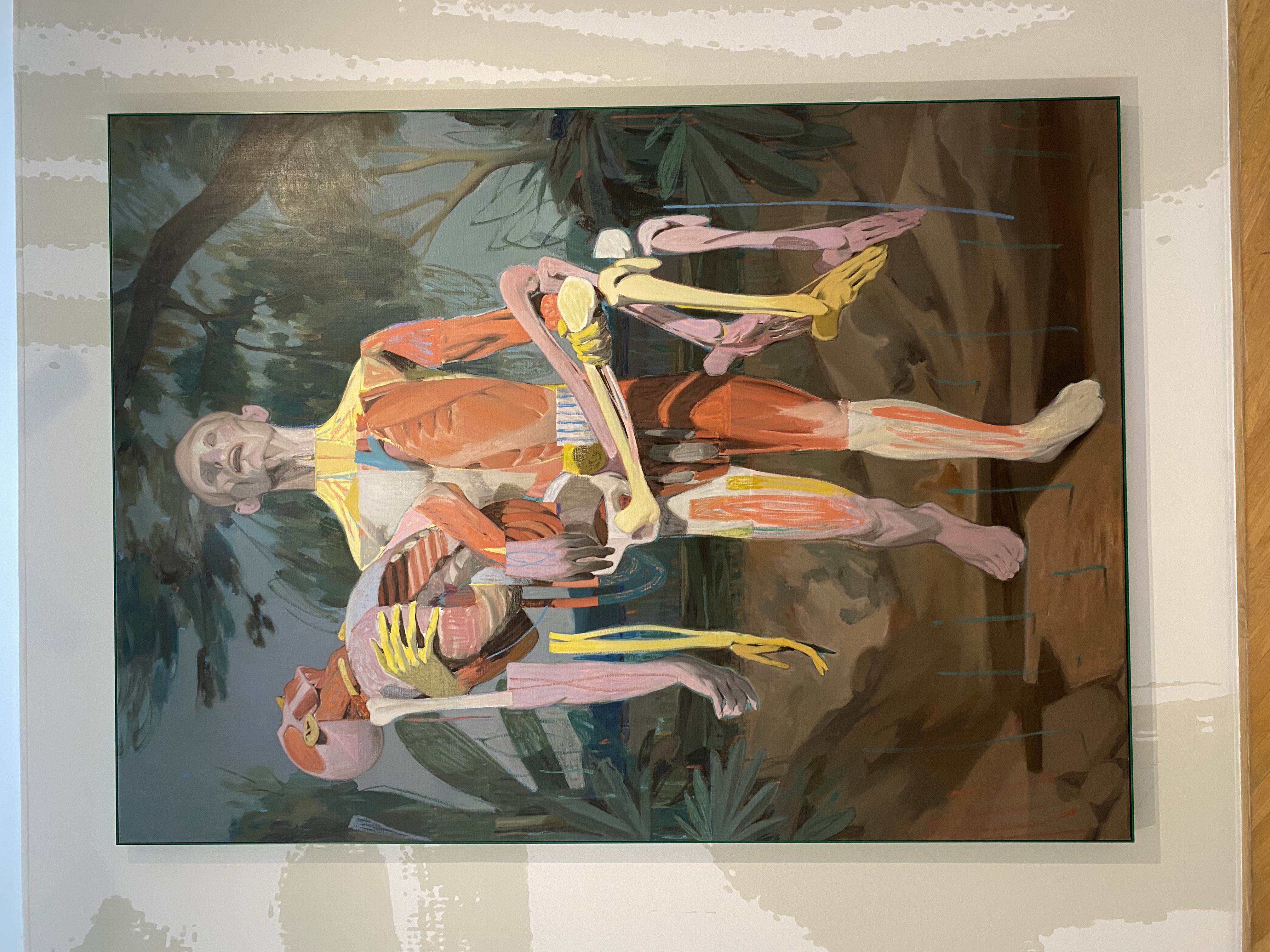
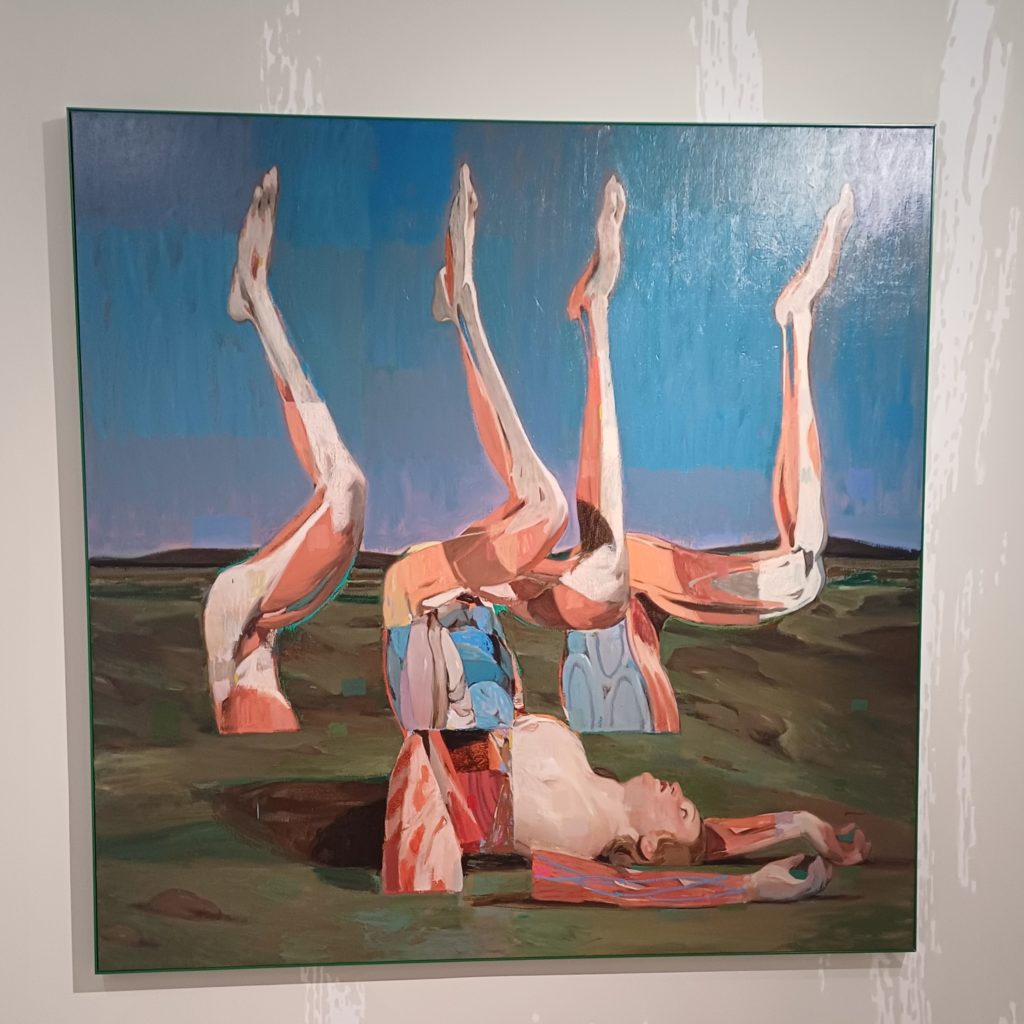
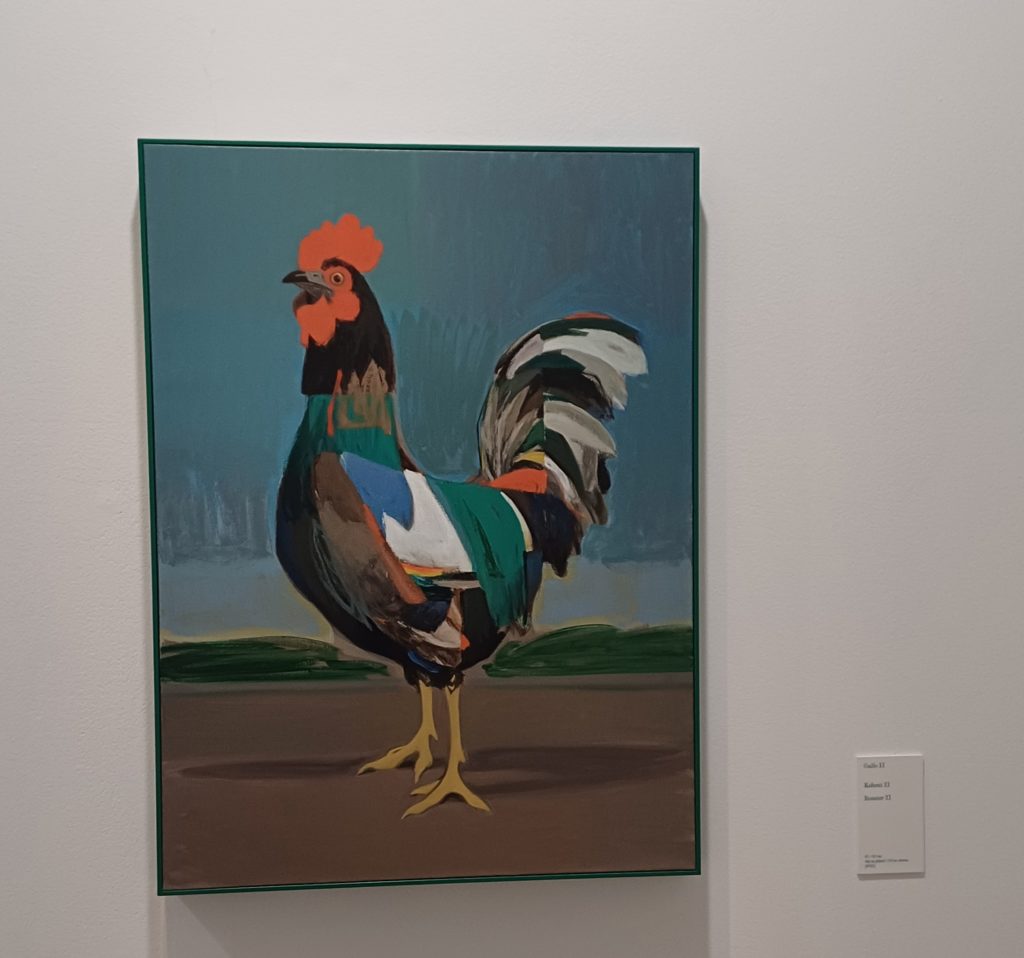
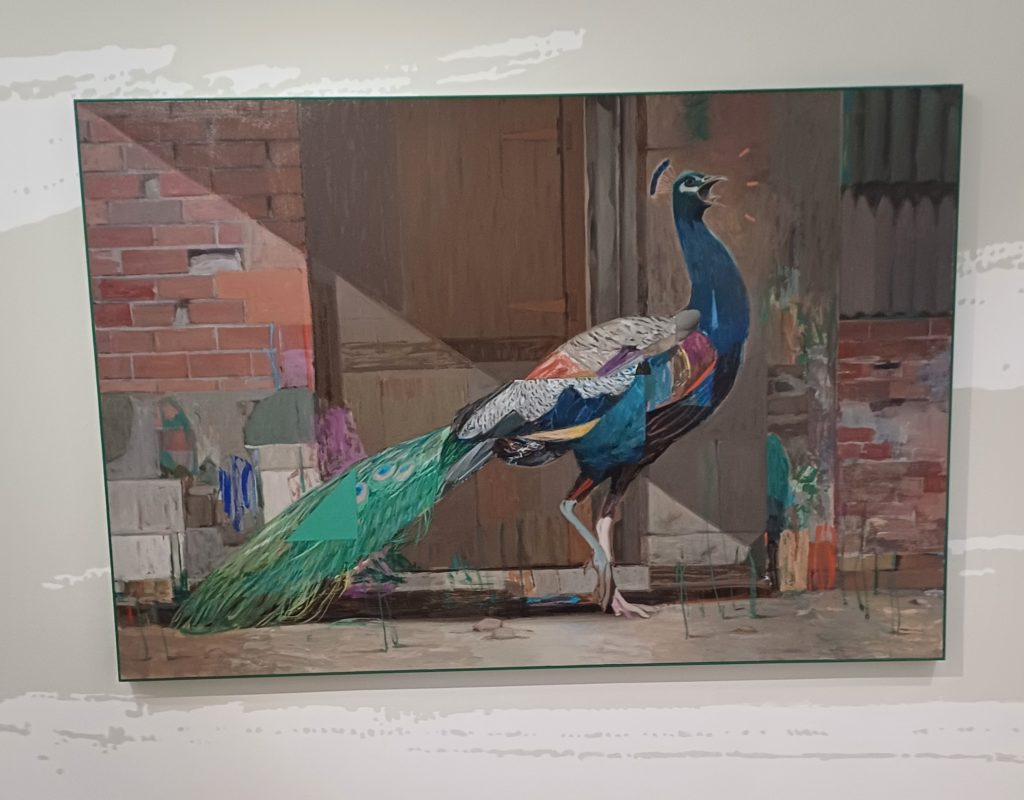
Our visual landscape is so oversaturated that we are in the habit of looking, rather than seeing. Aryz gives a lens to reclaim space, history, and how we see the world around us. His work is important because it shows that separating the past from the present, traditional from the modern, and urban from the old world is a recipe for stagnation. Street art and public art are a dialogue that can connect and inspire, and they open our eyes to a new way of seeing. To see the world as it is, and to inspire change, we need to engage, and we need more spaces that stimulate contemplation and reflection.